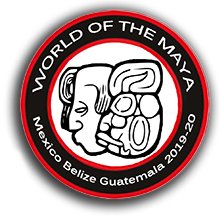Visit to Maya Underworld
November 26-27
Very unusual for us, we booked a tour. We had to do it, because there is no other way to visit Actun Tunichil Muknal, commonly known as ATM Cave. The road there led through the fields, I noticed a bulldozer clearing the forest for crops. Small, green, rocky hills stood in the middle of a newly cleared area like islands on a lake. I realized that these were ancient Maya structures that were waiting to be completely destroyed by more powerful construction equipment.
In the guided group, we approached the cave. What I disliked most is that it is strictly forbidden to take photographs in inside. Entering the cave requires crossing a small stream. Inside you are constantly wading in the water, climbing the rocks, and squeezing between the boulders in the dark. Our guide instructed us that bathing suits are disrespectful in this sacred place. For me, this statement was extremely strange, because the ancient Maya were unfamiliar with modern attire and before Christianity was introduced, they walked half-naked every day. I am sure that when they visited the cave, their naked bodies never offended anyone back then.
This cave is a true Maya underworld, the Xibalba. First, we came across broken ceramic pottery. The presence of jars and pots suggests the agricultural rituals performed here. The shamans wanted to create a mystical atmosphere in the cave. Some rock formations have been modified so that the shadow cast resembles a face or animals. Obsidian knives left in some places suggest ceremonial bloodletting rituals. Many skeletal remains have head trauma or cut fingers. This suggests that people were sacrificed here. The best-known skeleton is the one of an 18-year-old girl called the Crystal Maiden. Her bones calcified and have crystallized appearance. She was sacrificed too, her left leg is broken at the knee and her left arm has been amputated.
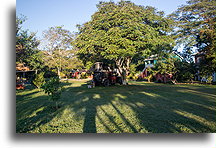
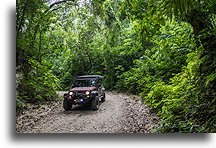
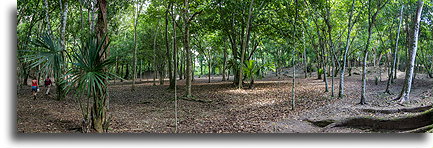
The following morning we left the Mana Kai Camping in San Ignacio and drove towards the border. Before going to Guatemala, we wanted to see another two ancient Maya cities. Our first stop was El Pilar, with 11 km/ 7 miles by the gravel road. At the gate, a man collected a fee and asked us to sign in the guest book. There were not many entries from recent time. I noticed we were the first tourists in three days.
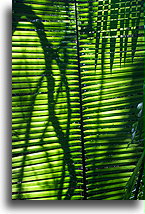
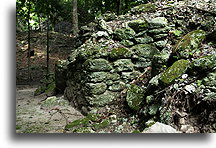
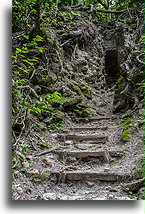
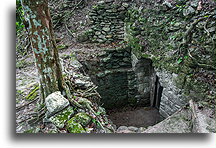
This site was discovered relatively recently in the 1980’s. El Pilar stretches to modern-day Guatemala which is only several hundred meters away. Excavations uncovered 25 plazas and hundreds of structures still covered by forest vegetation. Not much of the site has been cleared. It takes a little imagination to appreciate El Pilar's greatness. We had the entire site to ourselves; walking this place gives you a feeling of discovering it.
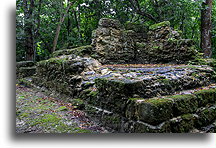
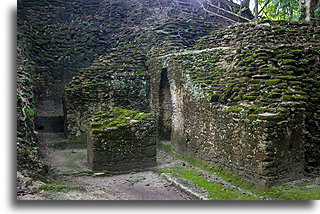
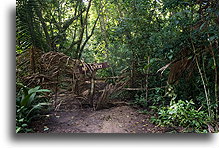
The last Maya ancient city that we visited in Belize was easily accessible Xunantunich. However, to get there we needed a short crossing of the Mopan River by hand-cranked cable ferry. The ruins dominated are by the El Castillo pyramid, a structure rising to a height of 40 meters/ 130 ft. It is the ruling family's ancestral burial place. Typically in Mesoamerica, the construction had many phases and lasted several centuries. The most noticeable is the intricate plaster frieze encircling the structure. It depicts a series of Maya deities, with the rain god Chaac as the central figure.
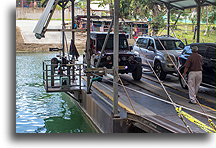
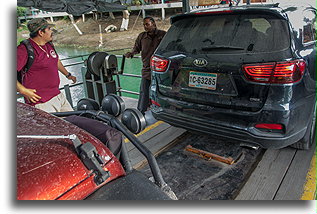
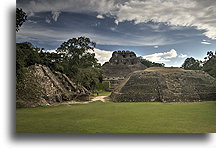
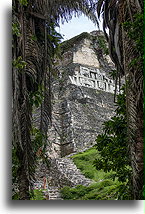
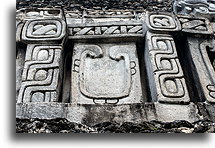
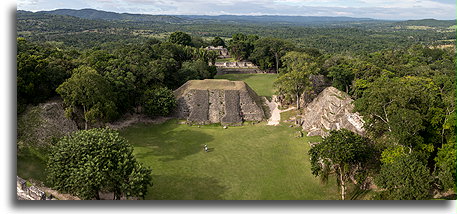

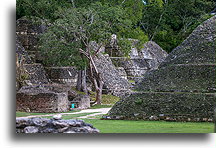
At 5 pm, we stopped at the border with Guatemala. The officials were friendly and helpful. We had to buy local currency to pay for the car permit. Within about an hour, the paperwork was finished and we were officially in Guatemala. From the border, we drove towards Yaxha. I was hoping to stay overnight near the ruins. It was dark when we got there. The soldiers at the gate informed us that we had to buy a ticket first, and it would be possible tomorrow morning at the earliest. Without the admission fee, they cannot let us go camping. The only alternative was the nearby El Sombrero Eco Lodge. They allowed us to camp right by the Lake Yaxha. "Don't try to swim in the lake," the hotel owner instructed us, "crocodiles live in the water."

